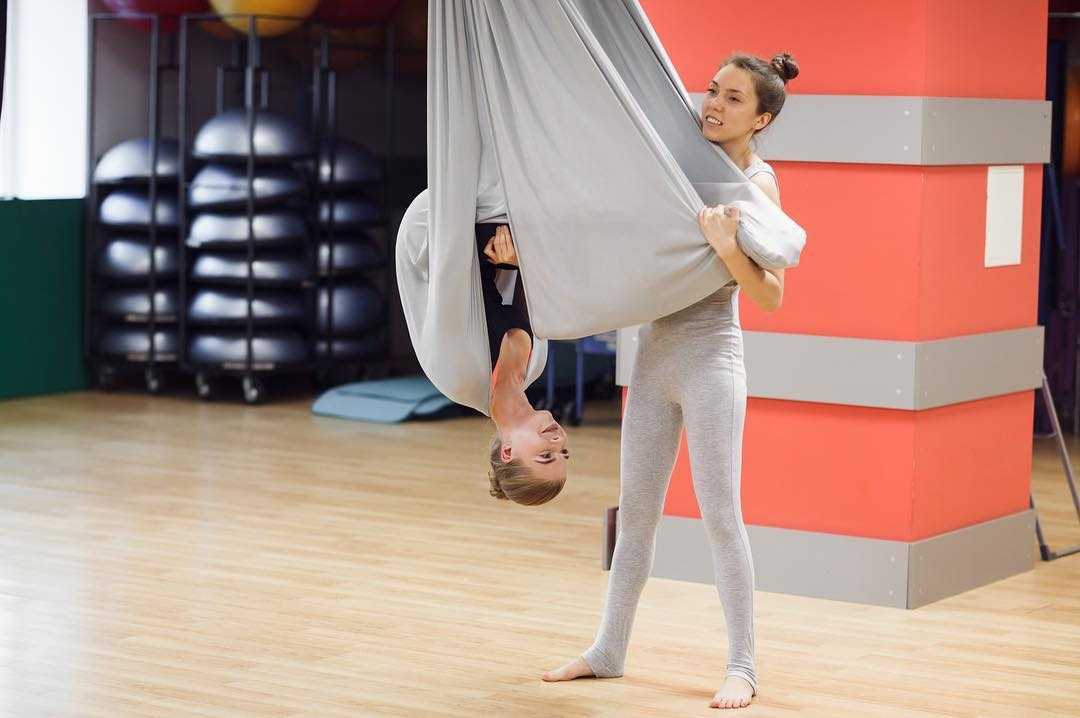Many of us come to aerial yoga because of its joyful and playful expression. We look at the soft, silk fabric and think to ourselves, “Oh, that looks so comfortable!”
However, we may also soon discover that the fabric is deceptively soft and more uncomfortable in certain aerial yoga poses, like inversions. What once seemed therapeutic suddenly turns painful, often because of the pressure of the fabric tightened over specific joints that the posture targets.
This can lead to frustration and further discomfort in the body if not addressed, in particular for beginners new to aerial yoga.
Physical Discomfort
One of the first things that may come as a surprise is the physical discomfort of aerial yoga. Everyone’s body is completely different, with the structure and also pain tolerance, so care can be taken to modify certain poses to alleviate the discomfort.
There are many reasons for this, from injuries, joint sensitivity, or excess body weight. None of these things need necessarily prohibit someone from trying and enjoying aerial yoga, as there are plenty of ways to mindfully adopt the practice.
Photo from @yayibayu in our Green Aerial Yoga Hammock
One of the amazing things about the aerial yoga hammock is its versatility! If performing a pose where the fabric is folded up tightly or scrunched like a thin rope, it can be folded into a wider band position to accommodate sore joints like ankles, knees, and more. It’s also important to remember that the fabric position can be moved slightly around the joint to find the perfect spot for you. For example, if the posture calls for placing the fabric under the knee, try to spread the fabric a little wider and move it slightly higher on the thigh so there is no pressure on the knee joint itself.
However, if you find that you still need more than that, then you can add some traditional yoga props to your repertoire. For example, padding can be added to the hammock by the way of a folded mat or blanket to the hips or lower back during inversions, or underneath the shoulders when the hammock is placed like a backpack.
Also, remember when it comes to inversions to give yourself plenty of time to ease in and out of each position to prevent dizziness.
Mental Discomfort
Another factor to consider is the barrier of the mind during aerial yoga. New things can often be scary to try and this is totally normal!
Not to mention, aerial yoga introduces things like inversions (Check out our blog about Top 5 Beginner Mistakes in Aerial Yoga Inversions) and moving off the ground in most classes, which can produce a fear of heights or anxiety for some if never done before. In traditional ground classes, inversions may be completely omitted, especially for beginners.
Photo from @aerostretching_class in our Purple Ombre Aerial Hammock
The best tool to use to train your mind through mental discomfort is the power of the breath. The breath controls the autonomic nervous system, which regulates things like your heart rate, body temperature, and more.
If you feel like your mind is racing and your body feels hot and flustered, you may be feeling nervous to try something new. It’s important to remember this key element of yoga- to always stay connected to your breath. Deep, slow rhythmic breathing will stimulate the parasympathetic nervous system and in turn, lower the heart rate so you feel more calm and confident.
However, the most important thing is always to listen to yourself. If you don’t feel ready for something, don’t push it. There’s no need to be in a mental battle with yourself about it, either. Everyone is always on their own journey.




Leave a comment